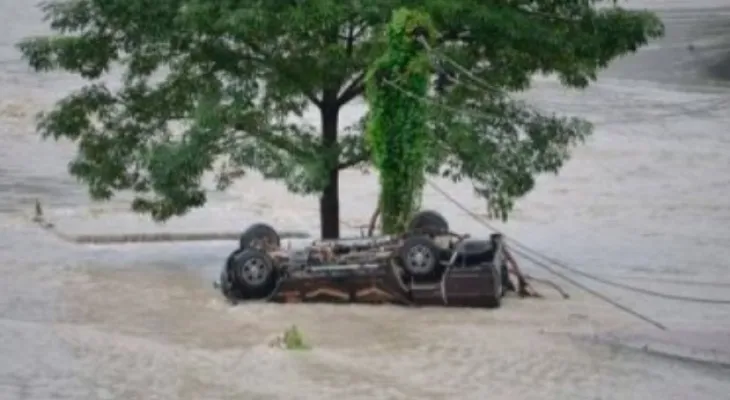Search here
Newspaper
Search here

Arab Canada News
News

Published: October 8, 2023
Indian authorities announced today, Sunday, that the destruction caused to roads and bridges due to the devastating floods in northeastern India has left thousands of people isolated despite the receding floodwaters.
The Disaster Monitoring Office in the Indian state of Sikkim in the region clarified that more than 2,500 people who were stranded have been rescued, but evacuation operations have been complicated by the destruction of roads, bridges, and telephone communication lines throughout most of the state located on India's remote borders with Nepal and China.
Officials from the office also mentioned that another three thousand people are stranded in several relief camps in the northern part of the state, and that adverse weather conditions have delayed rescue operations.
For its part, the state government stated that the floods have damaged more than 1,300 homes, and official figures indicate that more than one hundred people are still missing, with the confirmed death toll from the floods rising to at least 77.
Anilraj Rai, the state's relief commissioner, stated that 39 bodies have been recovered from different locations in the state, and that among the deceased were eight soldiers from the Indian army who were serving in the state, while the Jalpaiguri district police in West Bengal reported that another 48 bodies were recovered.
The Indian Ministry of Defense mentioned in a statement issued yesterday that the floods swept away explosives and firearms from several camps, while local media reports indicated that two people died and four others were injured due to the explosion of a mortar shell during the flow of floodwaters in West Bengal.
It is worth noting that the floodwaters surged after heavy rains inundated the "Lunak" glacier lake located at a high altitude, at the base of a glacial river among the peaks surrounding Mount "Kangchenjunga," which is considered the third highest mountain in the world, and that the water burst from this lake suddenly.
For their part, scientists have warned of the possibility of similar disasters occurring, and that the risk of such events is increasing across the Himalayas due to climate change, rising global temperatures, and melting glaciers due to the heat.
Comments